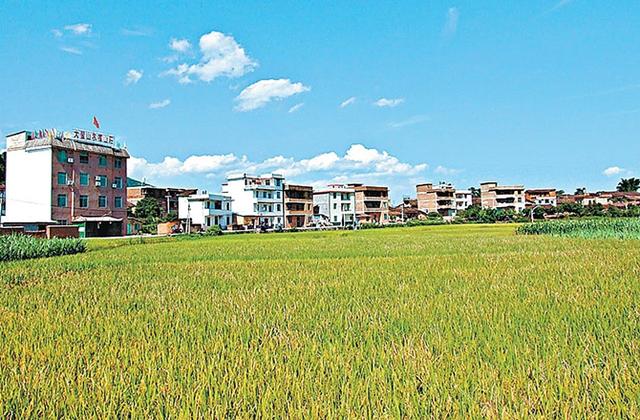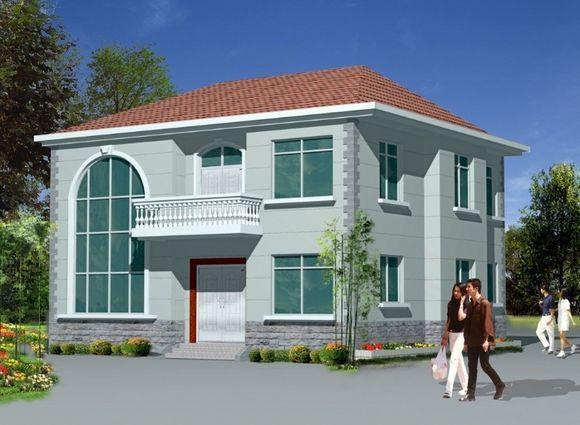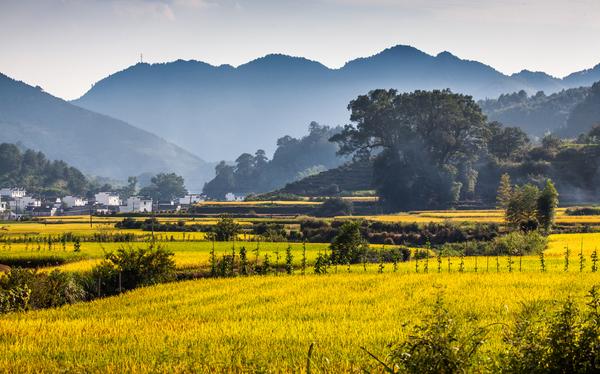When the collective construction land enters the market, is the "small property right house" protected?

The reform of collective construction land into the market mainly aims at the problems left over from history and does not break through the existing "Land Management Law".
Author | Guihua
A few days ago, the Ministry of Finance and the Ministry of Land and Resources jointly issued the interim measures for the Administration of Land value-added income Adjustment Fund for Rural Collective Construction Land, which makes clear provisions for standardizing the distribution of land value-added income in the process of entering the market of rural collective construction land. Last year the Winter Solstice this spring, there was a new round of soaring house prices in some first-and second-tier cities across the country, affecting the nerves of the public. The reform of the land system involves the interests of thousands of families, so it is particularly concerned by the public.
In December 2014, the General Office of the CPC Central Committee and the General Office of the State Council jointly issued the opinions on Rural Land expropriation, the entry of Collective Construction Land into the Market, and the pilot Reform of the Homestead system, and decided to select a number of counties and cities throughout the country to carry out land pilot reform. In February 2015, the standing Committee of the National people's Congress authorized the State Council to launch pilot reforms in 33 pilot counties (cities and districts), including Daxing District, Beijing, on rural land expropriation, the entry of collective construction land into the market, and the homestead system. Of the 33 pilot projects, 15 are related to the reform of collective construction land into the market.
China adopts the method of classified management of land use. according to the requirements of the Land Management Law, land includes agricultural land, construction land and unused land. Different land uses adopt different management methods, and the conversion of agricultural land and unused land into construction land is strictly controlled and needs to go through certain examination and approval procedures for the rational use of land resources. The "three pieces of land" reform this time is all related to construction land. The transformation from agricultural land and unused land to construction land, especially to urban construction land, usually produces a very poor land rent which is higher than the agricultural land rent and brings land value-added income. The interim measures for the Administration of Land value-added income Adjustment Fund for Rural Collective Construction Land is to solve the problem of how to distribute land value-added income.
It needs to be clear that collective construction land is a historically formed concept. Provisions of the Land Management Law revised and implemented in 1998
Any unit or individual that needs to use land for construction must apply for the use of state-owned land according to law (Article 43); the right to the use of land collectively owned by farmers may not be transferred, transferred or leased for non-agricultural construction (Article 63).
Under the restrictions of these two sections, rural collective land can not be used for other construction activities except for the examination and approval of homestead construction and the construction of public facilities and public welfare undertakings, as well as the establishment of township enterprises. In the middle and late 1990s, China's rural township enterprises were generally restructured to private ownership, and then there were few newly established township enterprises. This means that rural collective land can not be used for commercial construction and development. Farmers apply for homestead, mainly to meet the basic needs of their production and life of "self-use" nature, do not have the nature of management. This is why the rural homestead and its upper houses cannot be bought and sold outside the collective, or after buying and selling, the real estate certificate cannot be dealt with.
The key to understanding the interim measures for the Administration of Land value-added income Regulation of Rural Collective Construction Land is to grasp the word "management". The existing collective construction land is basically produced before the revision of the Land Management Law in 1998, mainly from township enterprises before the restructuring. A few places have not strictly implemented the Land Management Law, and have continued to produce some collective construction land after 1998, such as Shanghai. Before 2004, it was also approved for the collective to carry out factory or commercial construction on agricultural land without land expropriation, and if the village collective paid part of the fees to the government, it could complete the land conversion and obtain a "red certificate" different from the national land use right. The difference between the "red certificate" and the "green certificate" of state-owned land use rights is that the latter can be legally traded and used as bank mortgage, and the former can only be used on its own. At present, there are more than 30 million mu of collective construction land in China.
The main purpose of the reform initiated by the central government is to aim at the more than 30 million mu of collective construction land left over from history. After the reform of township enterprises, the land use right basically went into private hands, and then some restructuring enterprises also failed to transform, which brought about the problem of how to dispose of collective construction land. The purpose of this round of reform is to explore ways to invigorate these collective construction land to meet the needs of the market circulation of construction land resources and industrial upgrading. Since the reform of collective construction land aims at the "operating" land left over from history, it does not involve land for self-use such as rural homestead, let alone non-construction land such as arable land. therefore, this reform does not change the policy of banning foreign trade of rural residential land. That is to say, the construction of "small property right house" is still illegal, and the purchase of "small property right house" is not protected by law.
In addition, the reform of collective construction land into the market is mainly aimed at the problems left over by history, and the reform does not break through the existing Land Management Law for the stock of land left before the revision of the Land Management Law. It has always been a clear attitude of the Central Committee to resolve the contradictions left over from the past through reform, rather than creating more contradictions. That is to say, this reform policy is applicable only where there is collective construction land left over from history. Where there is no land for collective management left over from history, it is not suitable for this reform policy. The policy of entering the market of collective construction land does not break through the current Land Management Law. To understand this policy, we must understand that the original intention of the central reform is to solve historical problems, and local practitioners cannot misinterpret it.
Thirdly, since the reform is mainly aimed at the collective construction land left over by township enterprises in the 1980s and 1990s, it is mainly meaningful in the eastern coastal areas. The reason is that in the past, township enterprises were relatively developed in the eastern region, such as southern Jiangsu and Zhejiang, and in the vast central and western regions where township enterprises were underdeveloped in the past, there were few collective construction land left over. Breaking through the existing system through policy reform is ultimately only related to the interests of farmers in a small number of areas in the east and has nothing to do with most farmers in the central and western regions. Breaking through the reform of the Land Management Law can only make a small number of people who have become profit-hungry, such as farmers in the Pearl River Delta and Yangtze River Delta, get more without pains, and have nothing to do with the majority of people. The goal of the reform is to allow the added value of land to be enjoyed by the public rather than by a small number of people. The current mainstream media discourse seems to deliberately misunderstand the policy, intended to promote the reform of the land system away from the direction that benefits the majority of people.
Copyright notice: this article is an exclusive manuscript of Xinhuanet Sike, which must be reproduced from the source of Xinhuanet Sike. For authorized cooperation, please contact sike@news.cn.
- Prev

Rural houses are built to imitate each other. There are also street houses in the United States.
Rural houses are built to imitate each other. There are also street houses in the United States.
- Next

What on earth has to do with the continued popularity of agriculture?
What on earth has to do with the continued popularity of agriculture?
Related
- A course of planting techniques and methods on how to grow carrots
- How to plant the latest tulips?
- Is it better to pick tea in the morning or in the afternoon? When is the best time for tea to be picked? what is the third or fifth tea?
- Launch Yuanxiao Happy combination Haocha + Tea Yuan healthy Taste
- Penghu Tourism "Fireworks 20 Parade with You"
- 2022 West Lake Happiness holds "Digital Revitalization Voucher" and draws iphone13 and laptop.
- Banqiao Fuzhou social houses are designed to change start-up combined with police elimination to create a safe and livable environment
- The convenient measure of "mechanical weeding" in Xinbei has been abused and the Agriculture Bureau has imposed heavy penalties on the illegal land consolidation.
- Changgeng University Joins Hands with Four Memory Factories to Rescue Memory Talent Shortage
- The list of Taiwan's top 100 MVP managers is listed by the Director-General of the Farmers' Association of Sanxia District.

